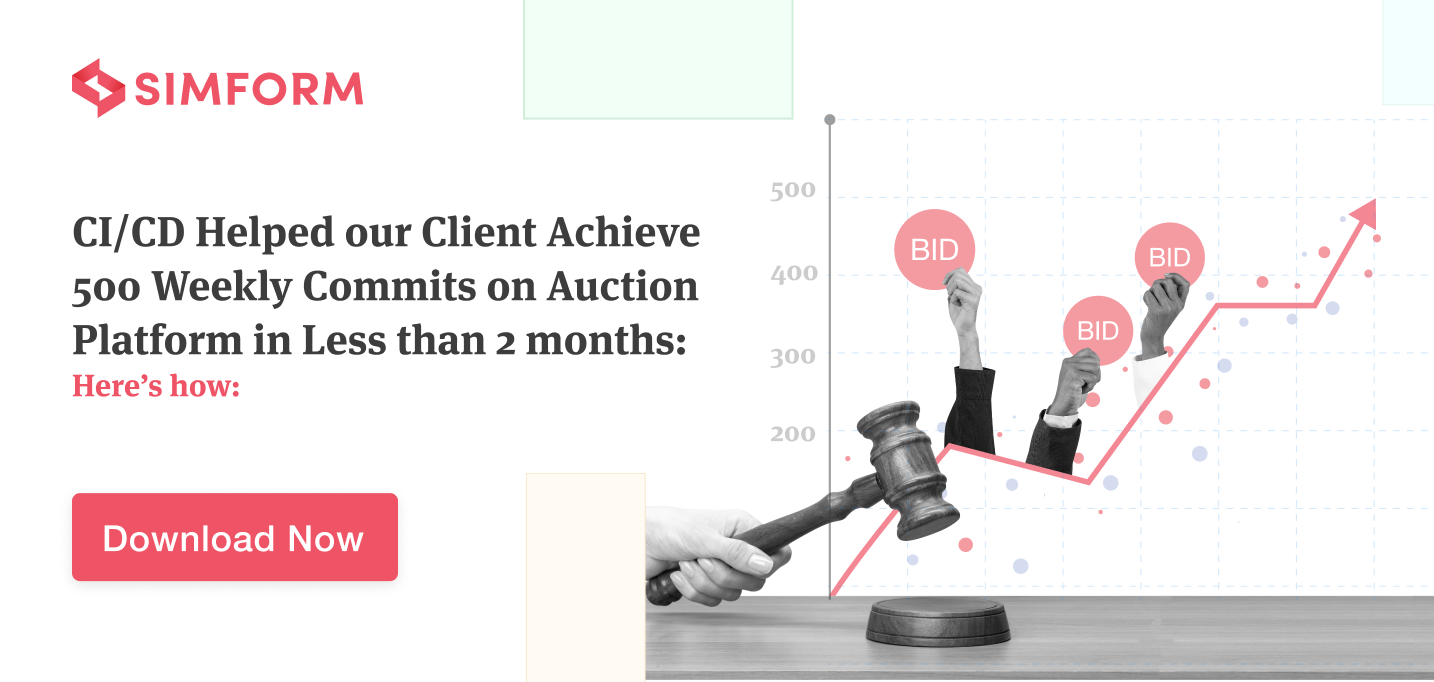Improving your operational efficiency does not necessarily translate to development excellence. You need systems with more than just rapid development and deployment capabilities. This is where an efficient CI/CD process helps with scalable, streamlined systems and improved ROI.
Let’s take the example of D4Science – an open-source research platform for scientists and researchers that caters to more than 11k users across 45 countries. Teams at D4Science needed to build a software framework for rapid releases.
The challenging part was creating a solution that can scale up to 200+ git repositories daily for the software delivery process. D4Science used Jenkins to create a scalable, flexible, and reliable CI/CD pipeline.
Likewise, every organization faces different CI/CD implementation challenges. We will discuss these challenges and provide a six-step strategy to overcome them.
Let’s first understand what the CI/CD process is.
What is the CI/CD process?
Continuous integration is the first part of the CI/CD process. A script mechanism fetches each new release, creates a copy, performs tests, and provides real-time feedback. Further, it allows software development teams to automate build, test, and release processes.
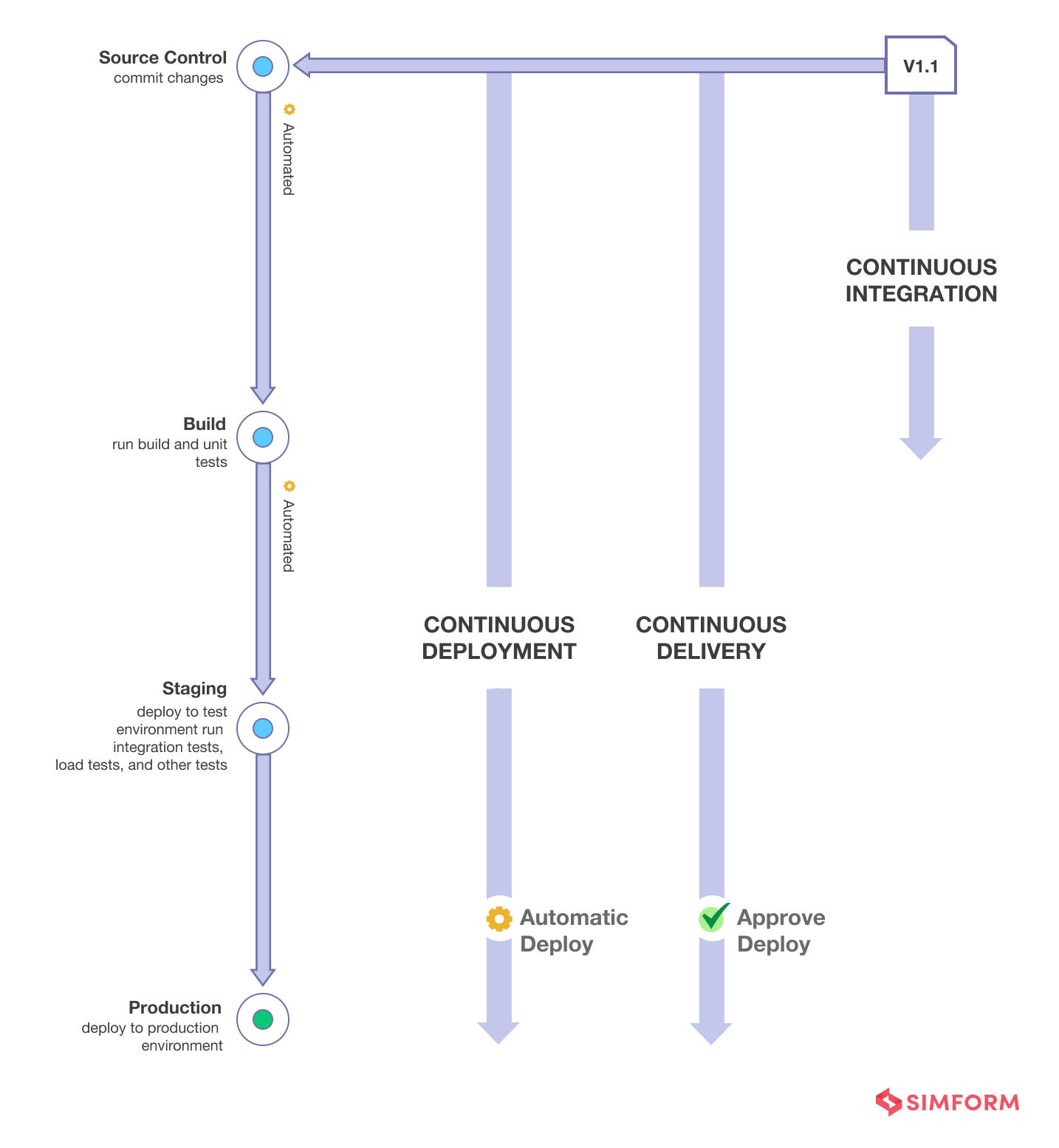
On the other hand, continuous delivery (CD) is about delivering every change in software to the user quickly and sustainably. These changes include new features, UI improvements, and upgrades of functionalities. Furthermore, it extends the CI function by deploying the developer’s changes in testing and production environments after each build stage.
CI/CD processes provide quick delivery and reduced risk of error-prone releases across the software development lifecycle. However, implementing the CI/CD process does pause several challenges of security, scalability, cost, and performance bottlenecks.
Challenges of CI/CD processes
From wrong CI configurations to lack of expertise, there are several reasons for the challenges in implementing CI/CD processes. Therefore, understanding the challenges of CI/CD implementation, its causes, and finding practical solutions is vital.
Higher time to market
Most organizations face the challenge of implementing CI/CD pipelines that efficiently reduce delayed deployments and time-to-market. According to a study, teams spend an average of 66 hours creating deployment pipelines. So, if you don’t have an efficient CI/CD pipeline, it can lead to delayed deployments.
CI/CD allows continuous feedback integration and testing automation. Without proper implementations, you may have undetected errors reading the deployment stage. Further, you need to detect errors and rectify them at the deployment stage, which increases the time to market.
Security integrations
The CI/CD process has multiple stages, and so you’ll need many security tools at each stage for continuous monitoring of apps, tracking anomalies, vulnerabilities, etc. For example, a static application security test (SAST) tool is run after a pre-commit check.
In addition, issues arising during incremental SAST testing must be resolved quickly. The challenge is the heterogeneity of these security tools and their integration issues.
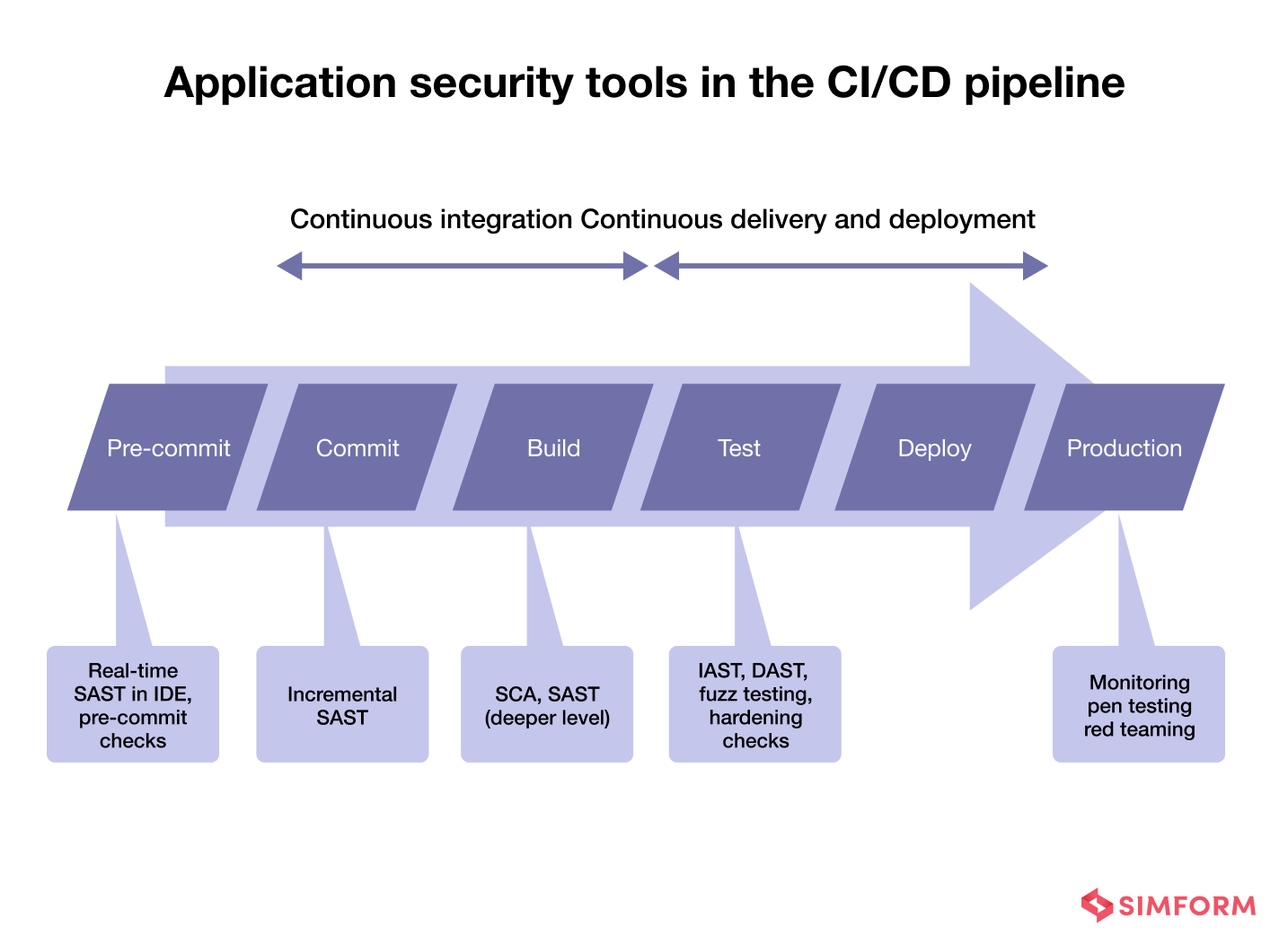
Performance bottlenecks
Every organization adopts DevOps and integrates CI/CD to improve app performance. However, there can be several red flags that teams may encounter during the CI/CD process leading to a risk of failure. Some of these red flags are,
- Higher change failure rates are a significant risk for any organization as it leads to lower service performance. In other words, if changes in your applications are failing continuously, you need to harden the deployment teams.
- Cracks in the pipeline due to the need for manual processes between the automated processes. You can use orchestration across SDLC to close the gaps between automated processes.
- Data silos can create risks of wrong decision-making due to inaccessible information. So, it is important to break data silos and provide access to different departments across the organizations as per need.
Automation inefficiencies
Automation inefficiencies in CI/CD occur due to wrong process automation, testing automation flaws, configuration issues according to test type, etc. And automation inefficiencies can, in turn, lead to poor release quality, higher false positives, and increased costs. So, there is no denying that achieving optimal automation for your CI/CD processes is essential.
Cost management
Implementing the CI/CD process can be time-consuming and have a steep learning curve if your organization has no prior experience. In addition, it means you need to spend on tools, resources, and training, which adds to the project cost.
Increased costs should enable the organization with equally rewarding results, or it becomes an overhead.
Multiple CICD pipelines
Enterprises would generally have several large-scale projects under development at the same time. It means that multiple development teams are committing changes to several code repositories. So, if there is an issue with one of the code changes, finding the root cause and isolating it from others becomes challenging.
Now that we have discussed CI/CD process challenges, here are six-step strategies to overcome them.
Steps to overcome CI/CD process challenges
Every challenge is a lock with a specific key or solution. So, it’s essential to understand the challenges and how suitable a solution is before implementing the CI/CD processes.
Step 1: Focus on velocity improvements
Improving the time to market needs a higher velocity of deployments. Often organizations look to choose a CI/CD solution that helps them scale rapidly. However, improving velocity can be challenging without focusing on CI/CD process flows and infrastructure.
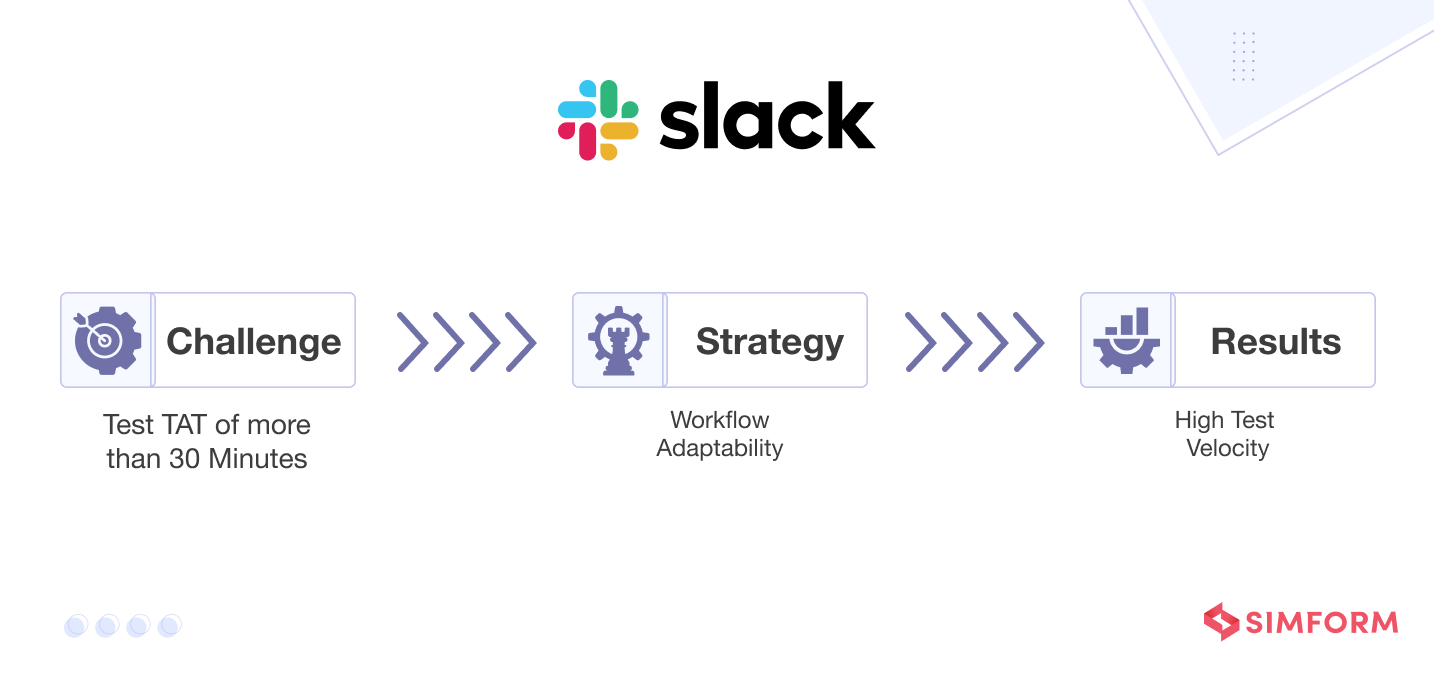
In 2020, Slack’s developer productivity was facing multiple challenges like,
- Testing TAT above 30 minutes consistently for many individual commits.
- Test flakiness per pull request(PR) was consistently 50% which measures the percentage of a single flaky test.
Slack teams were executing one million test suites on a daily basis, with higher TAT. The solution to Slack’s problems was revamped workflows for enhanced CI/CD, improving the velocity of testing deployments.
Some of the workflow changes that Slack teams made were,
- Pre-merge pipeline is an existing workflow where less than 1% of test execution must pass to merge with the code pull request.
- A post-merge pipeline is a new workflow introduced by Slack where less than 10% of tests are executed against each commit and provide a trigger to the CD pipeline.
- The regression pipeline was introduced with the new workflow that executes the remaining batches of tests.
If the pre-merge test batch fails, the developer’s workflow is blocked. Slack teams closed the loop and minimized the bad code making its way to CD pipelines. It allowed them to improve testing velocity and the high-performance CI/CD process.
Similarly, organizations looking to improve their testing velocity to reduce time to market can change the existing workflows. Further, it is also essential to identify the critical points in a workflow where security integrations are needed. Lack of optimization in security integration can lead to vulnerabilities and the possibility of cyberattacks.
Step 2: Integrating DevSecOps
The lack of proper tools and policies across the deployment pipeline creates several security bottlenecks. One of the approaches that can help overcome security integration challenges is DevSecOps.
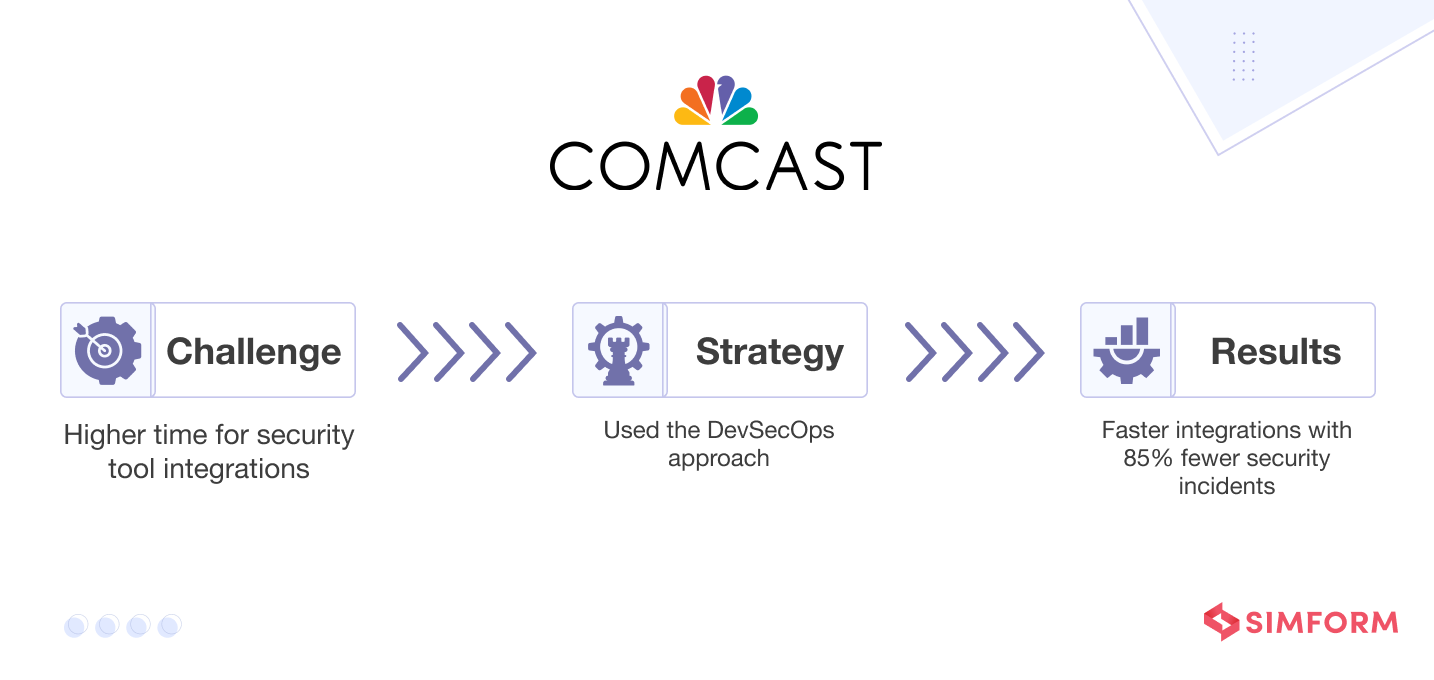
One of the massive telecom conglomerates, Comcast, had a DevOps culture in place. However, integrating a security tool, feedback loop and making changes took up to 6 months. Comcast used DevSecOps to automate security integration across ten applications.
Larry Maccherone from Contrast Security first executed a pilot DevSecOps project for Comcast. The approach was to roll out new tools for the development team with a 90-minute workshop. Further, a dedicated DevSecOps coach was assigned to each workshop. It helped the development team adopt the core practices for security integrations and repetitive tasks.
For example, DevSecOps allows Comcast teams to automate software composition analysis (SCA) installation and scanning of vulnerabilities. Further, such security tools flag vulnerabilities, and development teams solve them over an incremental sprint. This approach helped Comcast reduce vulnerabilities and see 85% fewer security incidents.
Similarly, you can look to leverage DevSecOps and automate security integrations for a secure CI/CD process. However, security integration problems are not the only ones that affect app protection. For example, poor-quality releases can also impact the security of your app.
Step 3: Improve release quality

Release quality can impact the performance and several other aspects of your application, like security, functionality, scalability, etc. Elisa is a telecom giant that caters to more than 2.8 million end-users across Estonia and Finland.
Catering high internet speeds to a massive user base can be challenging. So, Elisa wanted to use the CI/CD processes to transform the 90-day manual software upgrade ordeal into a 3-day operation. It means Elisa can handle 25 upgrades per network function annually.
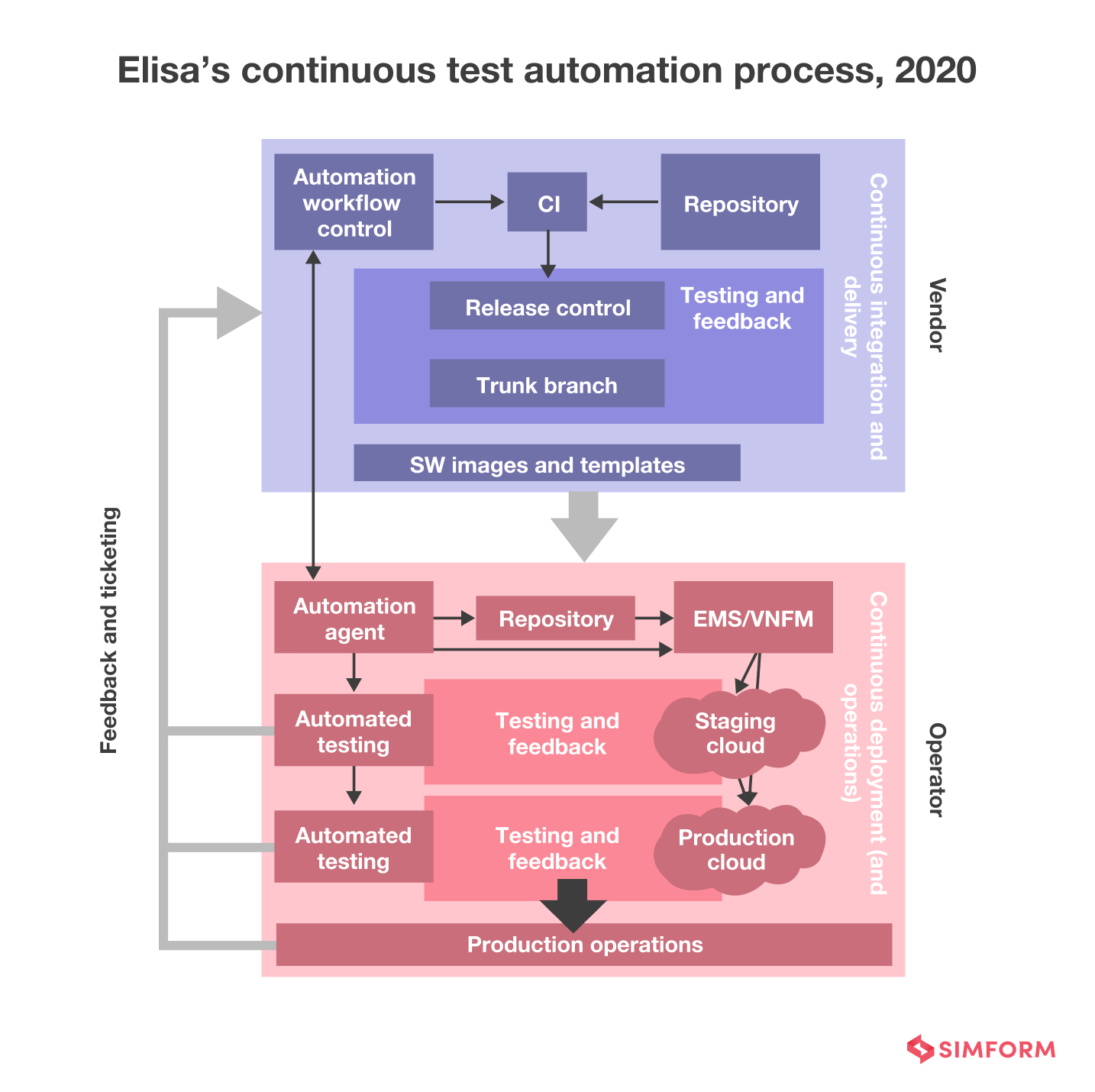
Elisa began by automating tests instead of downloading the upgrades from Ericsson’s environment. When Elisa receives the upgrades tested in Ericsson’s environments, it manually triggers the auto-installation.
Further upgrades are automatically deployed in the production network. Finally, the remaining 5-10% of the problems are fixed in the staging before it’s pushed to full production mode. This solution allowed Elisa to achieve 500 software upgrades across 20 network functions.
Likewise, you must test extensively for high-quality releases to optimize the CI/CD process and reduce errors.
Step 4: Leverage automation for optimized CI/CD process
Test automation is one of the significant aspects of the CI/CD process. If you don’t get it right, the inefficiencies of CI/CD implementations can lead to increased costs, low-quality releases, and security risks.
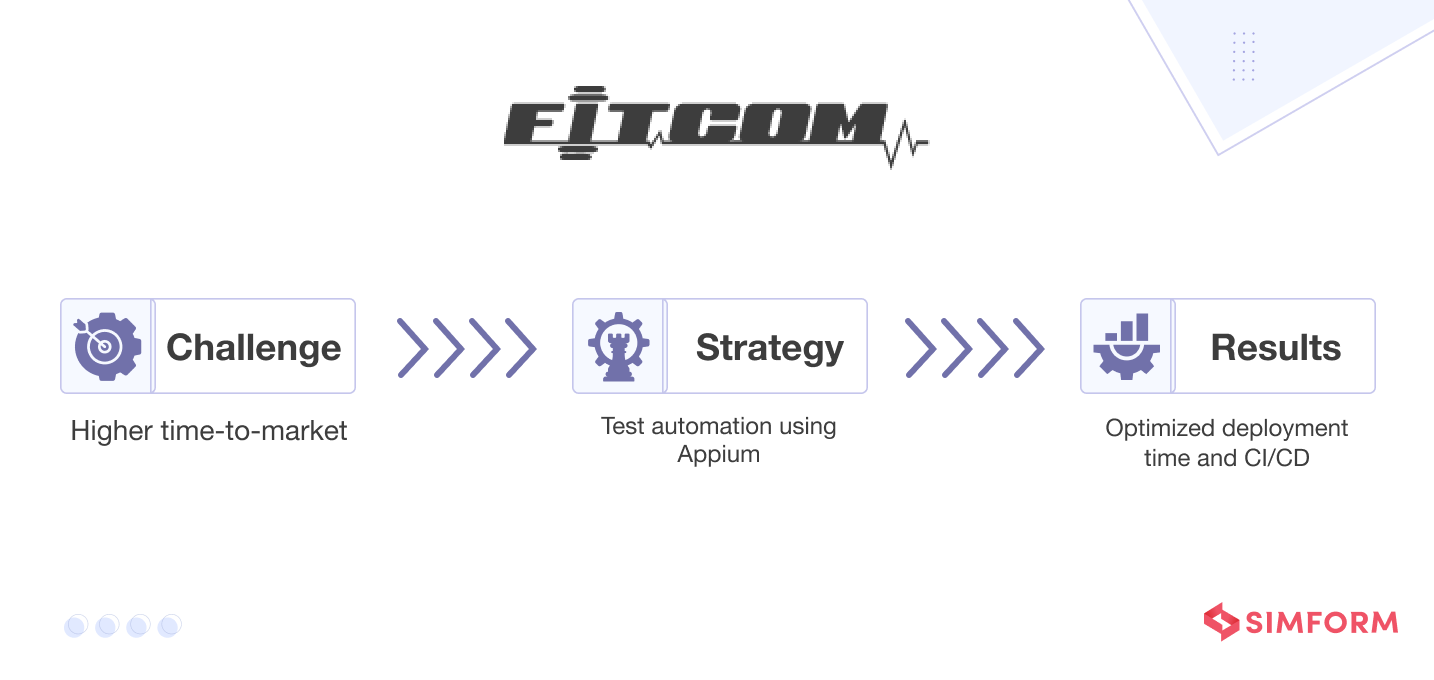
Fitcom’s initiative to build a platform for fitness studios’ mobile app development is a perfect example of how crucial automation is. Without automation, it can be tricky for a platform to enable the deployment of multiple apps with the same functionality. This is where Simform helped Fitcom with deployment and testing automation.
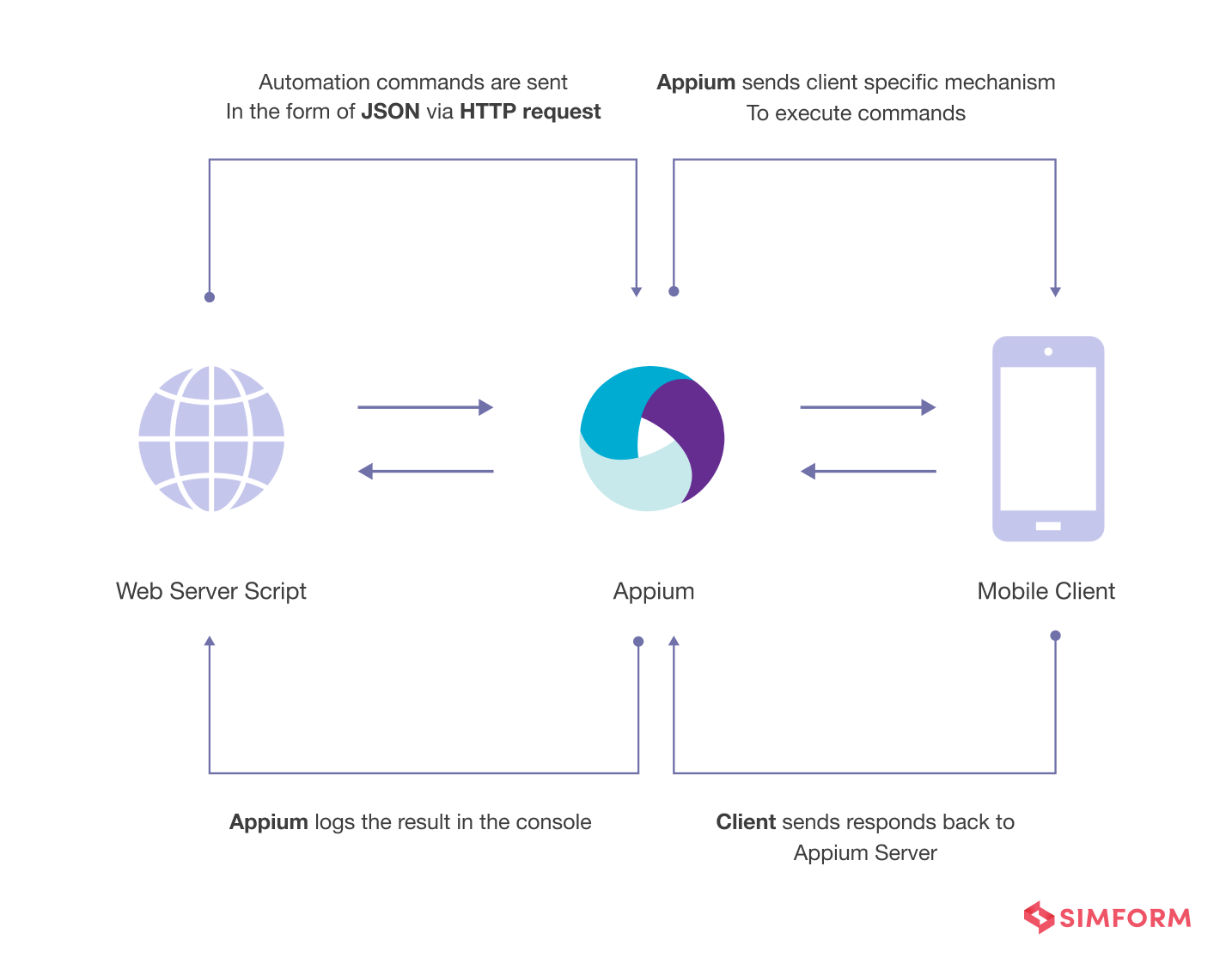
First, our engineers developed a Unix shell script that fetches the code for common app features and merges it with branding design elements. It builds new versions automatically according to the platforms like iOS and Android. Further, we used the Appium automation tool to automate 500 test cases within a few minutes, reducing the need for manual testing.
It helped Fitcom improve time-to-market and enhance CI/CD. Similarly, there are several other testing automation tools that organizations can use for testing and deployment automation,
- Katalan Studio
- Selenium
- Appium
- Eggplant
- Tosca
- Testsigma
Testing automation helps in not only reduce the release time but also optimize costs. However, you need optimized release cycles to ensure that costs are under control.
Step 5: Optimize the release cycle for cost management
CI/CD pipelines can have maintenance costs and expenses on resources. Managing these costs is essential to ensure your organization does not overspend. One of the best practices for optimizing the release cycle is to reduce resource usage and cost.
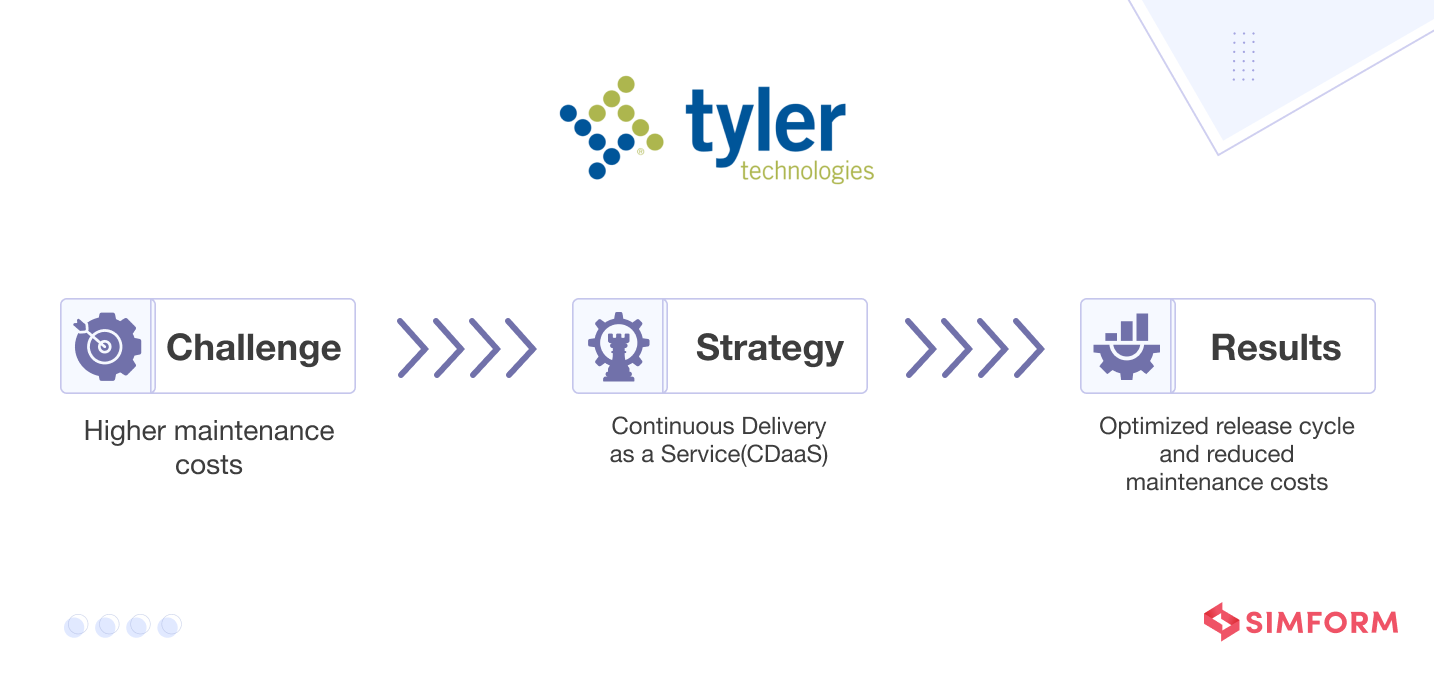
Let’s take the example of Tyler Technologies, which saved $1.2 million in CI/CD maintenance costs. Tyler Technologies is a leading service provider for end-to-end data management. Their clients are primarily local governments that digitize the information of services for administrative purposes.
Such massive data meant Tyler Technologies needed a solution that could provide reliable software architecture. So, they used a colosseum approach and hired multiple delivery gladiators to battle for excellence.
However, what followed was an increase in the maintenance costs. As a result, these delivery gladiators employed a dozen homegrown and vendor-specific deployment tools based on legacy applications.
Tyler Technologies leveraged Continuous Delivery as a Service(CDaaS) to cope with CI/CD maintenance costs. Further, they used Kubernetes for container orchestration and improved the release cycle to reduce maintenance costs. Likewise, you can optimize release cycles to enhance the quality of deployments and reduce costs.
Step 6: Use containerization for multiple CI/CD pipelines
Containerization has several benefits, one of which is the isolation of concerns. It helps in managing multiple CI/CD pipelines. Apart from that, the ability to spin up containers at will and terminate them after usage makes it a reliable option.
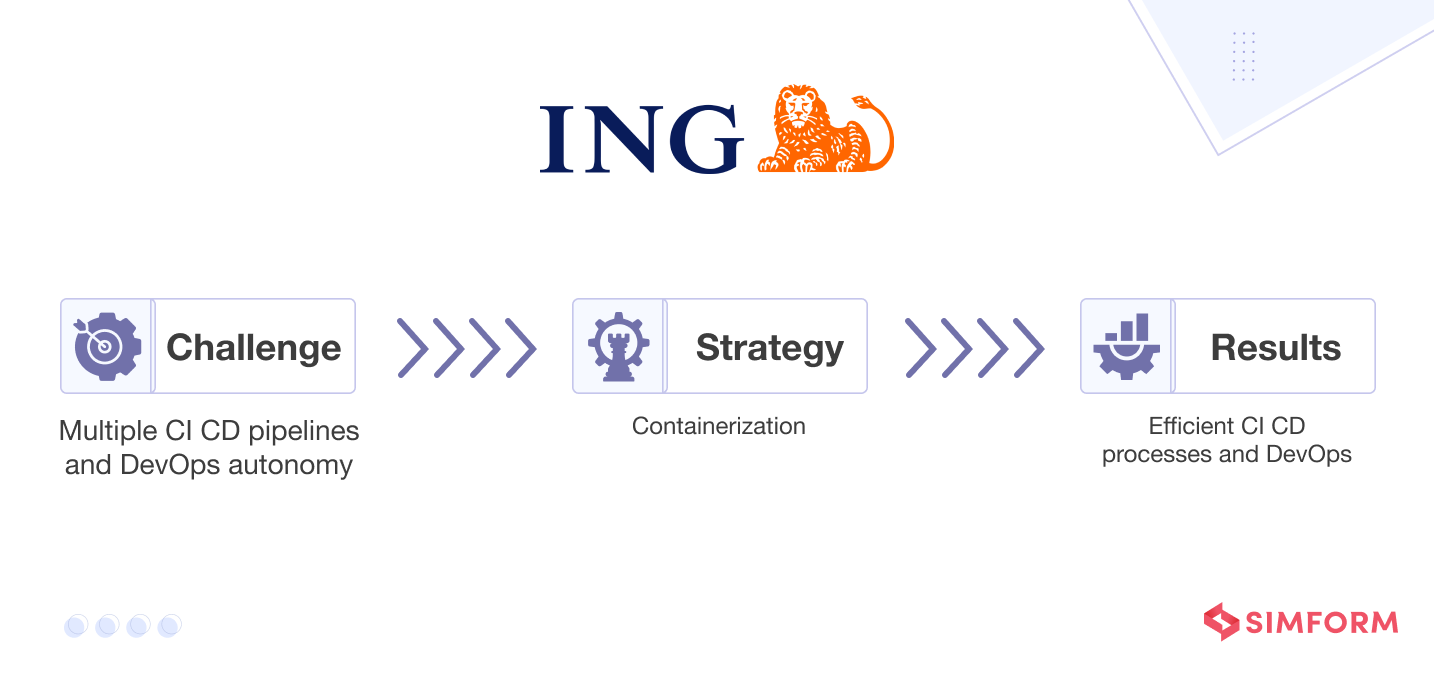
Take an example of ING’s containerization approach for cloud-native development. After an Agile transformation, ING realized the need for a standardized platform for their DevOps teams for autonomy and management of multiple CI/CD pipelines.
ING used Kubernetes to orchestrate containers and Docker for containerization. They built an internal public cloud for multiple CI/CD pipelines and green-field applications. The pipeline was earlier built on Mesos Marathon and migrated to Kubernetes. One of ING’s bank account management apps, Yolt, was hosted on a Kubernetes framework.
According to Onno Van der Voort, Infrastructure Architect at ING,
If you walk around ING now, you see all these DevOps teams, doing stand-ups, demoing. They try to get new functionality out there fast. For example, we held a hackathon for one of our existing components and converted it to cloud-native within 2.5 days, though the tail takes more time before code is fully production-ready.
As you can observe, ING used containerization to manage several CI/CD pipelines and apps. Similarly, you can use the containerization approach along with Kubernetes to optimize the orchestration of containers. It will help you manage multiple pipelines and improve the efficiency of CI/CD processes.
How does Simform help with the streamlined CI/CD process?
Getting the CI/CD process right is half battle won for your cloud-native development projects. However, the best solution for your organization depends on specific business requirements. On the other hand, an expert in implementing CI/CD pipelines can help you optimize not only pipelines but also build reliable architectures.
Simform has been at the forefront of providing CI/CD solutions for cloud-native developments across business domains.
With our CI/CD implementation expertise, you can expect,
- Rapid deployment
- Reduced costs
- Reliable app performance
- High-end automation
- High-quality releases
So, if you want to optimize and scale your CI/CD pipeline, signup for a 30-minute free consultation now!
